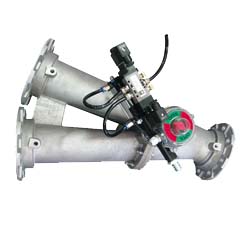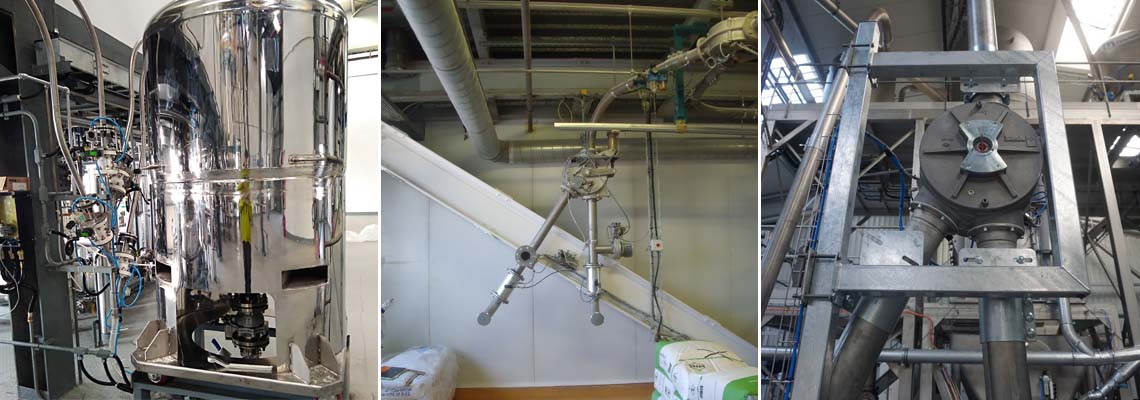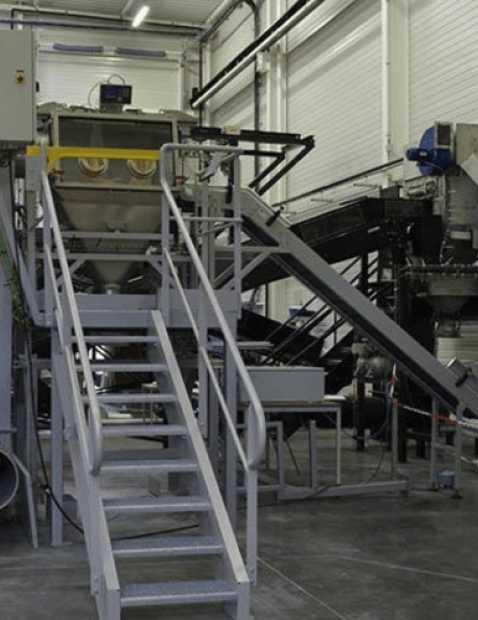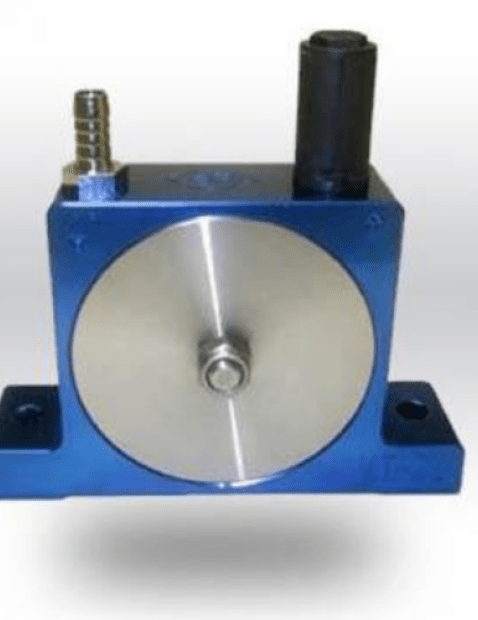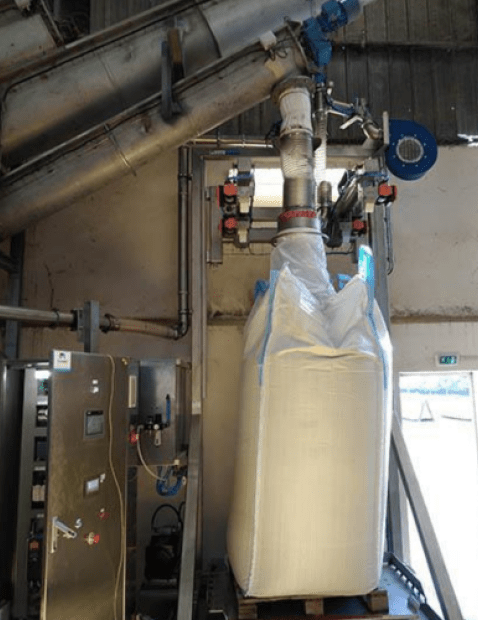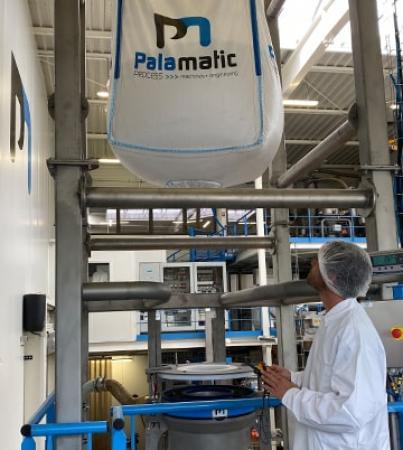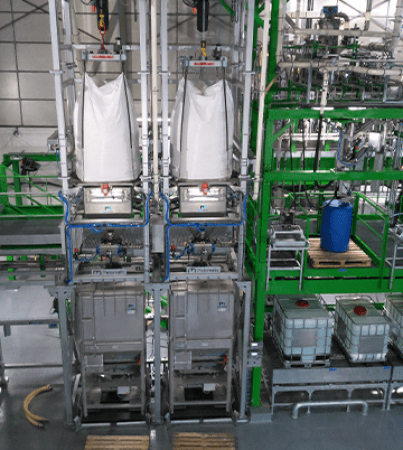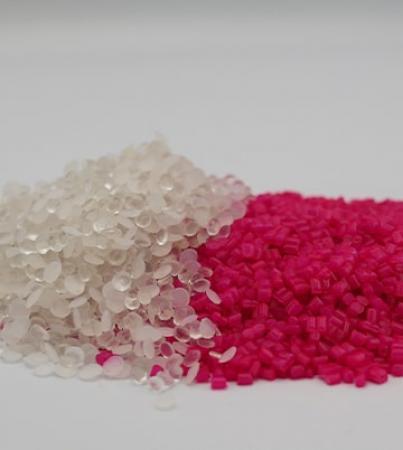1. Why is it important to choose the right referral?
Transferring, conditioning, storing your powders and ingredients requires the integration of pneumatic transfer systems with bypass switches on your lines to direct the flow of your powders to the desired equipment.
The choice of bypass valve is important because it ensures efficient deviation of the materials. It must be adapted to the type of powder being transferred as well as the transfer technology (pressure pneumatic, vacuum or gravity pneumatic).
Integrating a diverter that is incompatible with your application can cause many problems. The difficulties frequently encountered on junction boxes are generally:
- product jam in the switch
- premature wear of the seals
- product leakage from the axle
- product retention / risk of cross contamination
- poor positioning of the switch track (crossing of production batches)
In addition to production stops generated by switching failures, maintenance of this part is often difficult because accessibility is often poorly anticipated!
Here we give you a comparison between the different types of referrals, the advantages of each of them and the mistakes to avoid.
2. What questions should I ask myself if I plan to install a switch on my pneumatic transfer?
- How many switch tracks do I want to install?
- What pressure will the inside of the switch be subjected to?
- Is product retention a major concern?
- Is my product abrasive? What is the grain size of my product?
- What diameter is required for the product passage?
- Must the seal between the different routes be absolute?
- What is angle of repose for my type of powder?
Answering these questions will allow you to identify your need in terms of referral, or to transmit correct and precise information for the selection of the diverter for the transfer system.
The powder handling and transfer equipment will perform properly when the initial configuration and characteristics of the powders have been taken into account.

Need advice on your pneumatic transfer
equipment? I am at your disposal to help you.
Loïc, powder expert
3. The different switch designs
We can classify the diverters into two main families:
- Gravity application, to transfer where the product falls into a pipe without air pressure.
- Pneumatic conveying applications, the diverter is subjected to air pressure and the powder flows at a high velocity.
Comparative table of the different types of switches:
| Pressure/ depression |
Waterproofing | Hygiene (no retention) | Multi-way | Size Ø max. | Abrasive product compatibility | Price | |
|---|---|---|---|---|---|---|---|
| Tilting valve | No | ★★ | ★★★★★ | 2 | ★★★★★ |
★★★* |
Eco |
| Multi-channel | No | ★★★★ | ★★★★ | 16 | ★★★★ | ★★ | Medium/high |
| Valve bypass | No | ★★★★★ | ★ | 2 | ★★★★ | ★★★★★ | Medium |
| Rotary with rotating tube | Yes | ★★★★★ | ★★★★★ | 2 | ★★ | ★★★★ | High |
| Bypass pinch valves | Yes | ★★★★ | ★★ | 6 | ★★ | ★★★ | Eco |
| Flexible translating tube | Yes | ★★★★ | ★★★★★ | 4 | ★★ | ★ | High |
| Diverter valve for silo loading | Yes | ★★★★★ | ★★★★★ | 2 | ★★★★ | ★★★★★ | High |
| Flap diverter valve | Yes | ★★★★ | ★★★★ | 2 | ★★★ | ★★ | Medium |
★ Very low ★★ Low ★★★ Medium ★★★★ Good ★★★★★ Very good
* with specific coating
1. Points for gravity circulation
Tilting valve switch: allows two circuits to be supplied alternately. The valve seal is generally provided with metal sheet edge gaskets. Note that some trough designs are made without a gasket. The valve is actuated manually or via a pneumatic actuator.
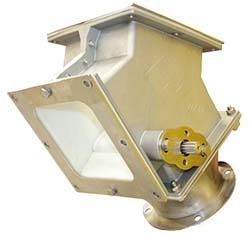
Multi-way routing: intended to send product in several directions: 2, 4, 6, 8,10 or more. Multi-lane turnouts, also called “Sputnik” type turnouts, are the only ones to offer this multi-direction performance. A rotating tube, controlled by an electric motor, allows the selection of the channel to be connected.
The tightness is ensured by a telescopic tube which, when the position is reached, is connected. It is imperative to shut off the flow of the product before any maneuver of the diverter tube. Frequent applications are in flour milling or in industries processing cereals.
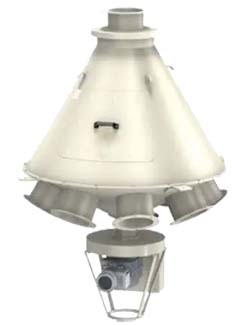
Valve bypass: the valve switch can supply one line at a time, or both tracks simultaneously! It usually consists of two knife gate valves and a "Y" shaped metal body. The knife gate valves are controlled by two pneumatic cylinders. Position sensors can be installed in order to check the positions of the valves.
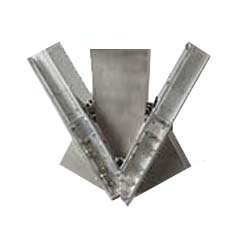
2. Turnouts for pneumatic transfer
Rotary turnout with rotating tube: rotary turnouts allow the connection of two pneumatic transfer pipes in a completely sealed housing. The connection tube is tilted by a rotary actuator and position sensors ensure precise positioning. An inflating seal allows a perfect seal and use in pressure or vacuum.
Switching from one channel to another must be done without product to avoid the risk of blocking the product passage. The full passage allowed by the switch avoids any pressure drop for the pneumatic conveying line.
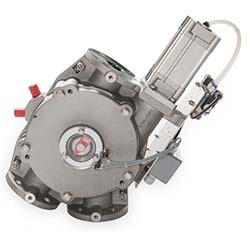
Pinch valve bypass switch: the pinch valve switch is most often used in the direction of 2 streams to 1, and not 1 to 2. In fact, to avoid product retention, the product flow must be from 2 to 1. This simple switch is reliable because there are no moving parts. The maintenance required on this type of switch is the replacement of the valve sleeves.
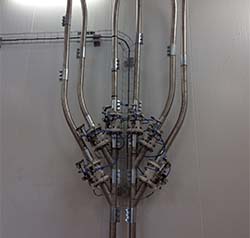
Switching flexible tube diverter: generally used for pneumatic transfers of granules, the flexible tube diverter allows an automatic watertight connection to several channels. The hose connection is made by a linear cylinder and an inflating seal.
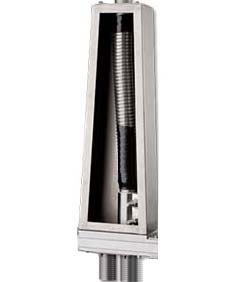
Diverter for silo loading (or slide switch): specially designed to be installed on the "heads" of silos or hoppers, bypass switches ensure the arrival of product at the end of the pneumatic transfer line.
The design of these heavy-duty bypass turnouts allows them to be used for dense phase pneumatic transfers with abrasive media. Due to their weight, it is necessary to provide solid support for the switch on the silos.
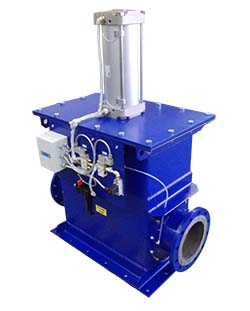
Ball turnouts: are made up of a machined body and rotor pivoting on its axis. The seal is ensured by wiper seals and the rotation is done by a pneumatic actuator. These switches are suitable for pneumatic transfers in dense phase at low pressure, and for products with low abrasion.
Defining the right switch for its application is essential to ensure good product flow and avoid recurring maintenance!
Contact Palamatic powder handling experts to define your pneumatic and ingredient distribution circuits!
